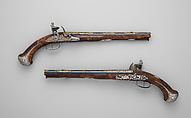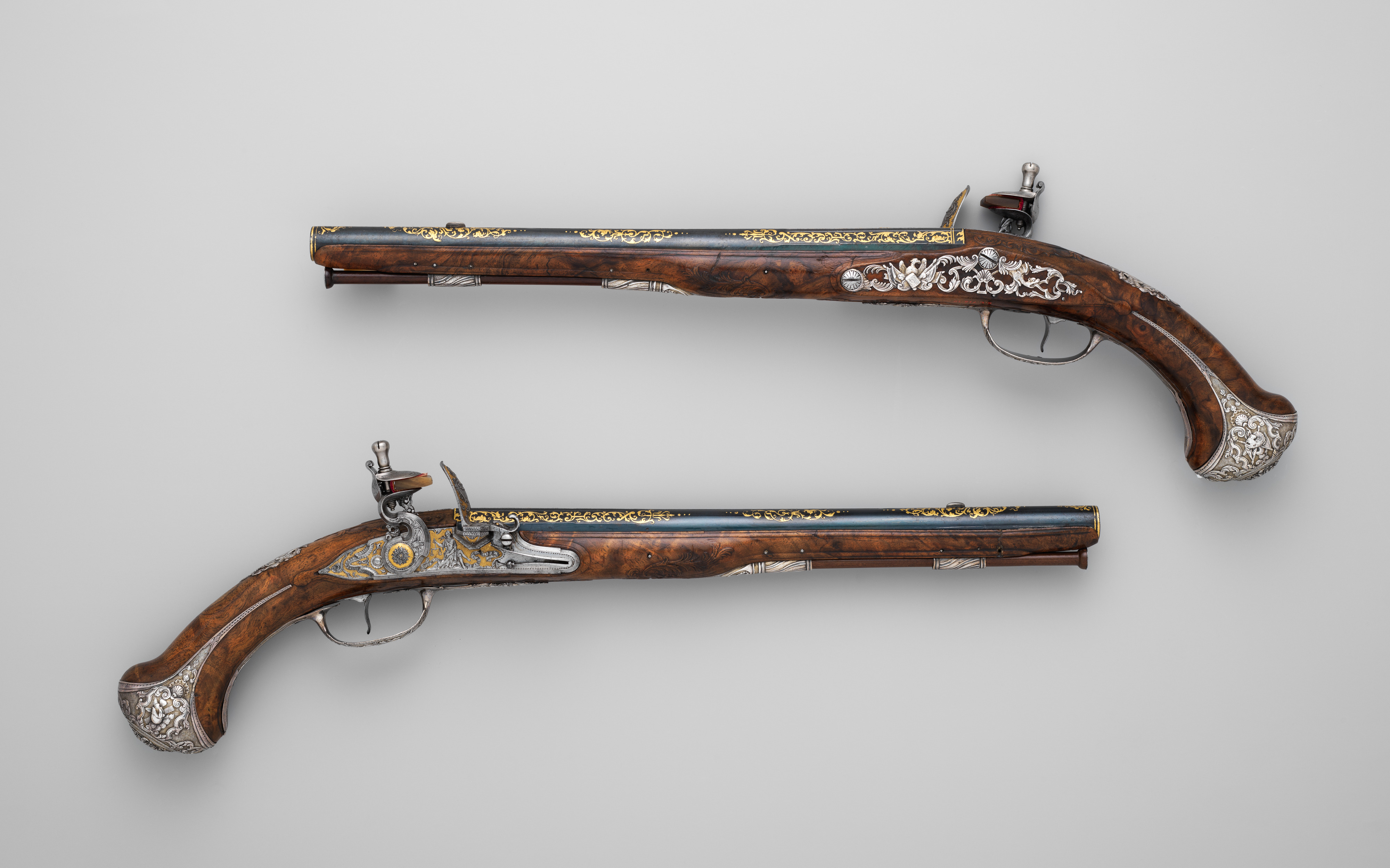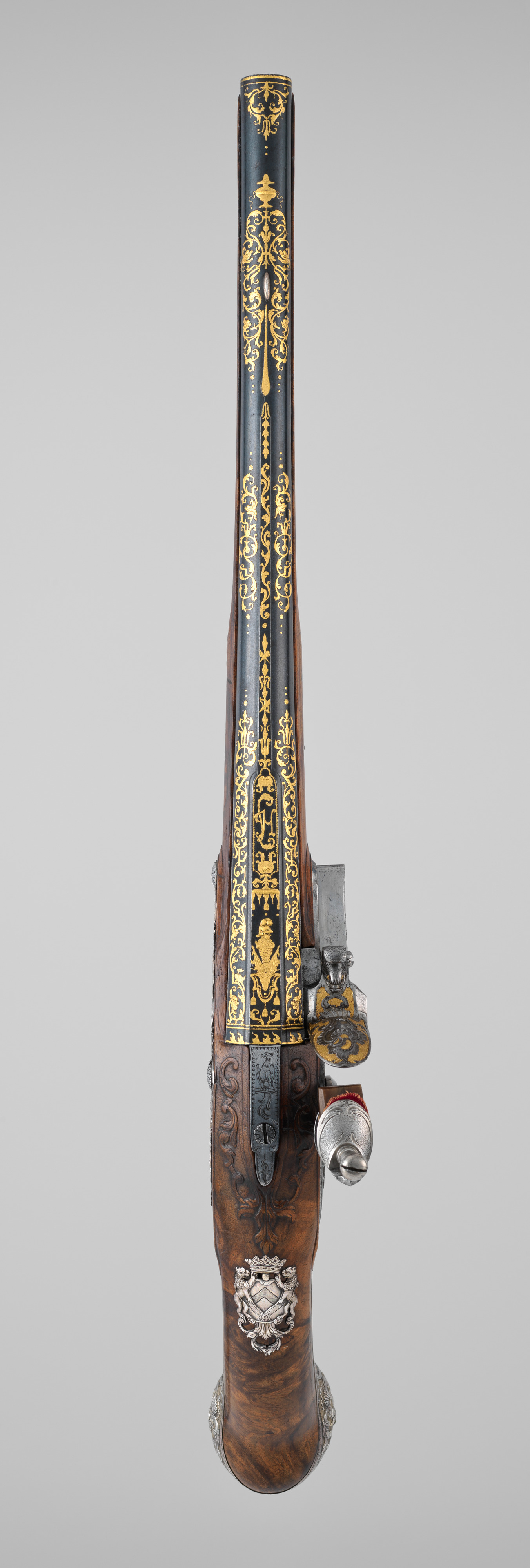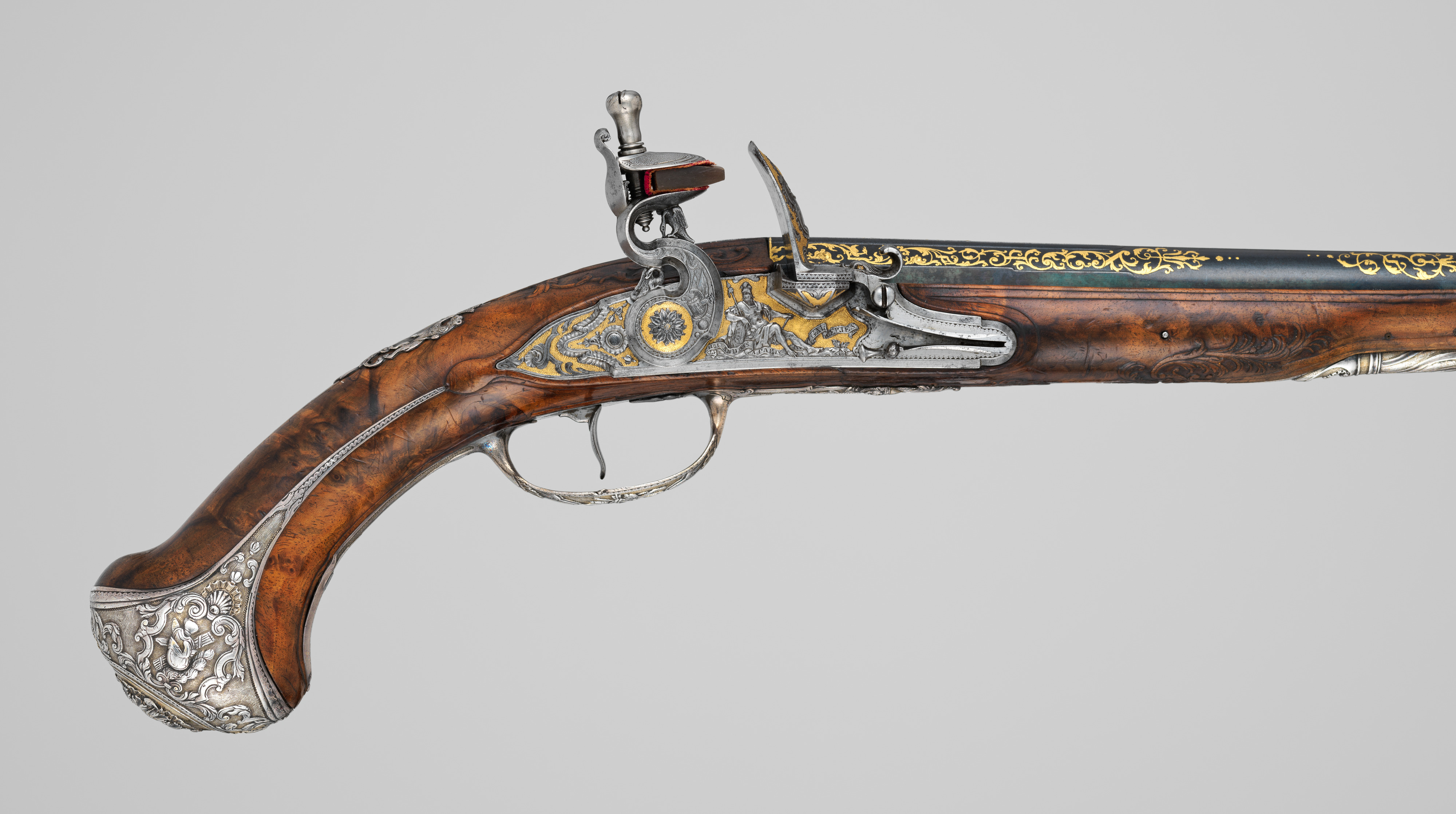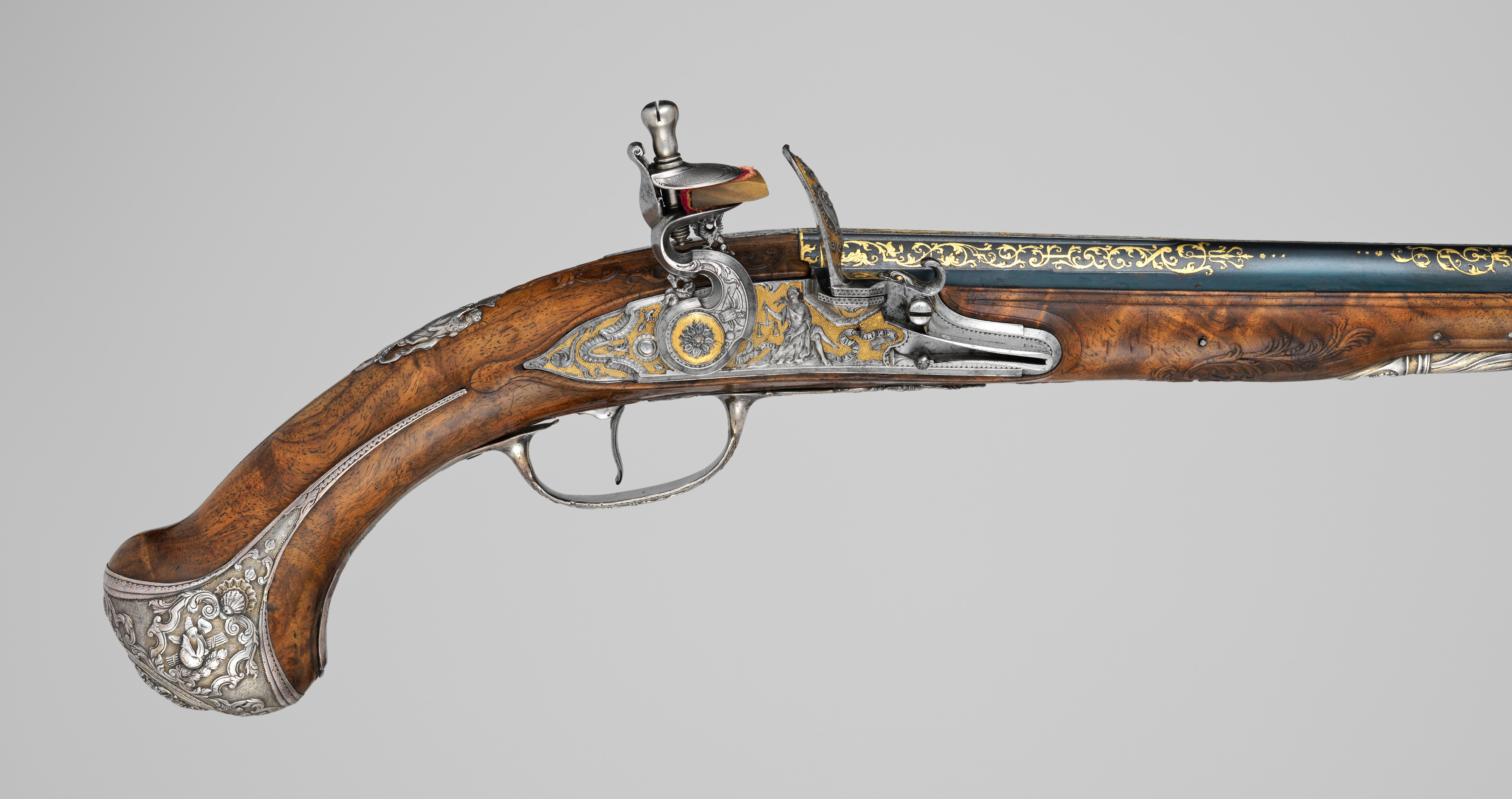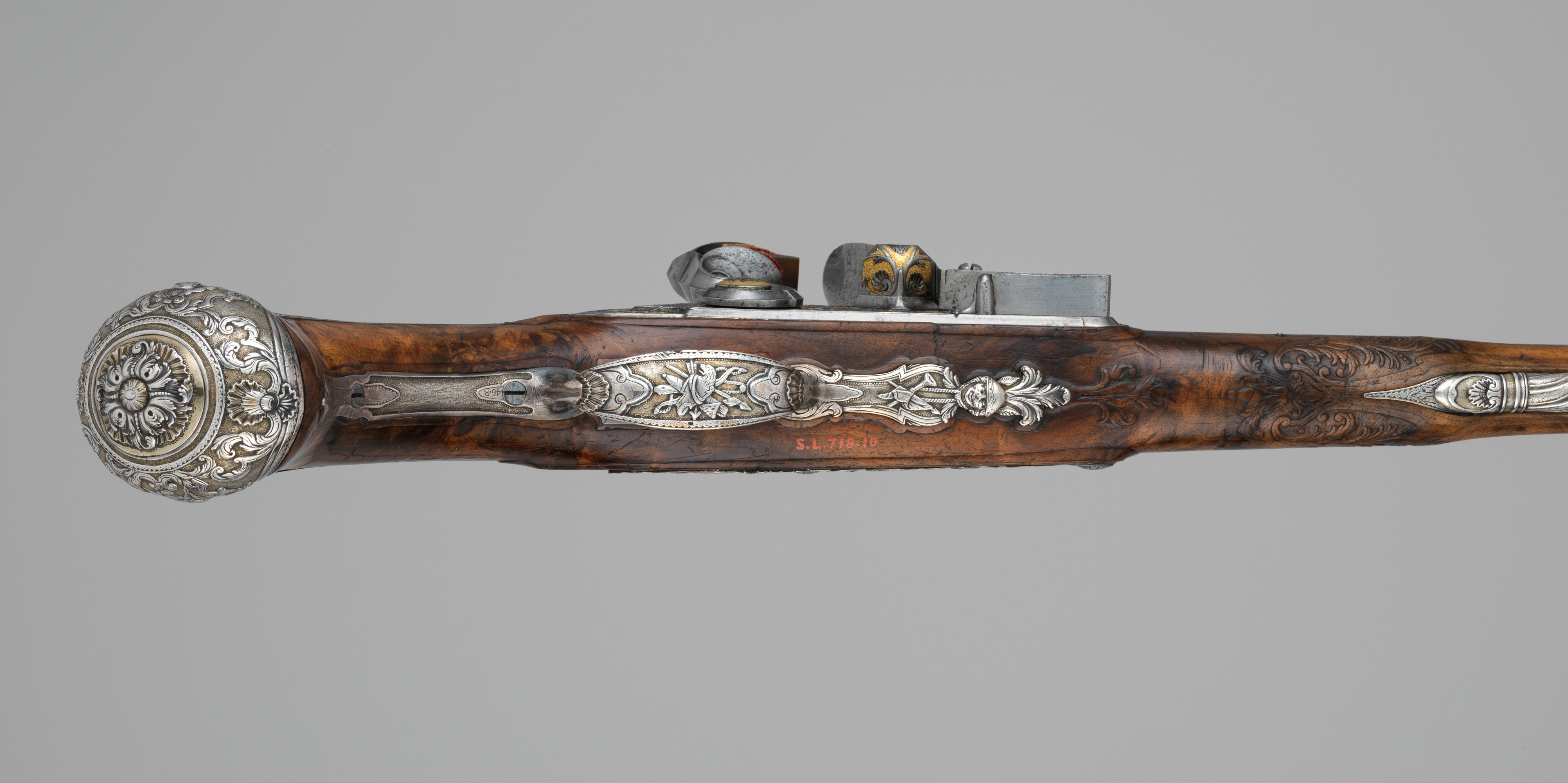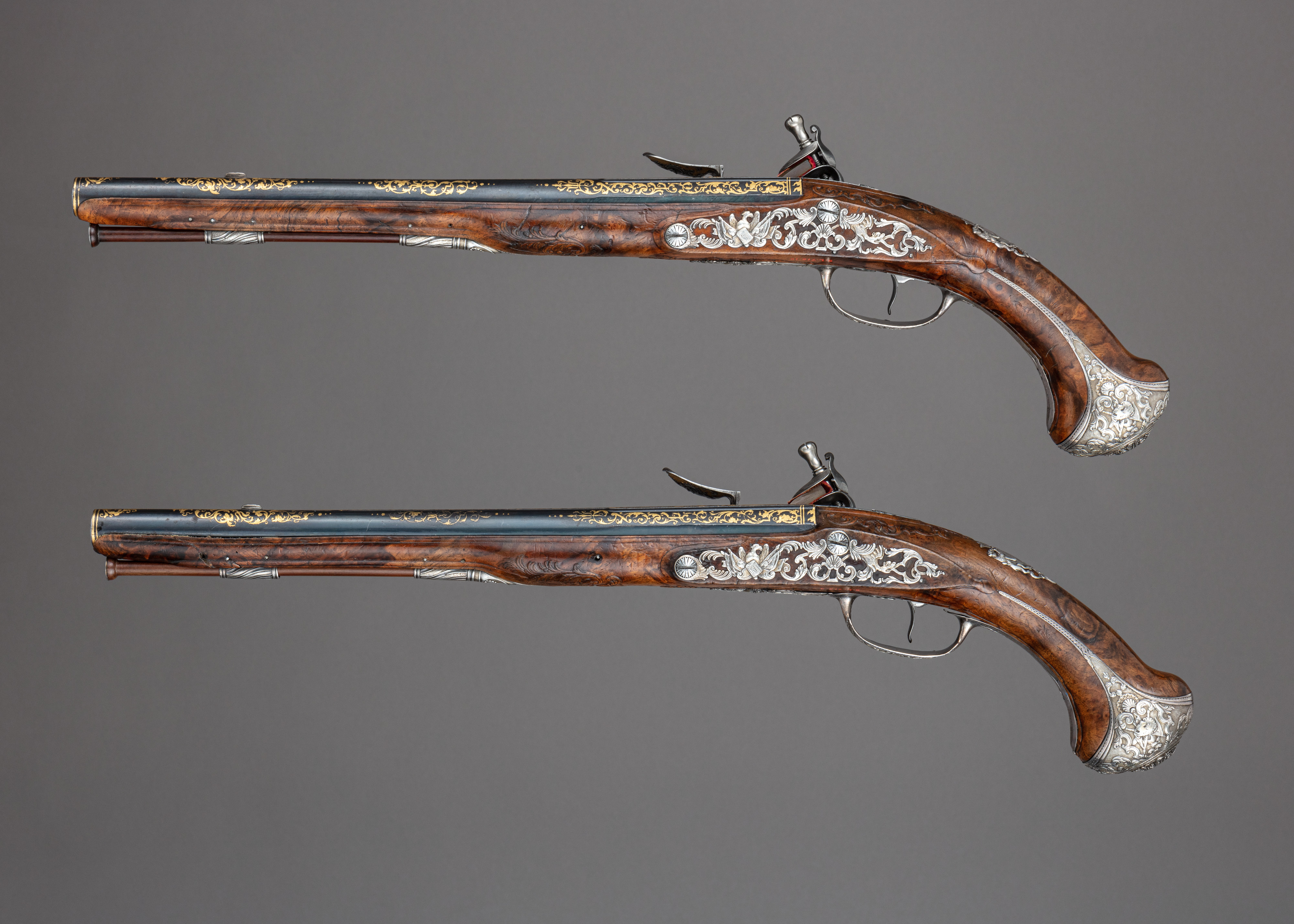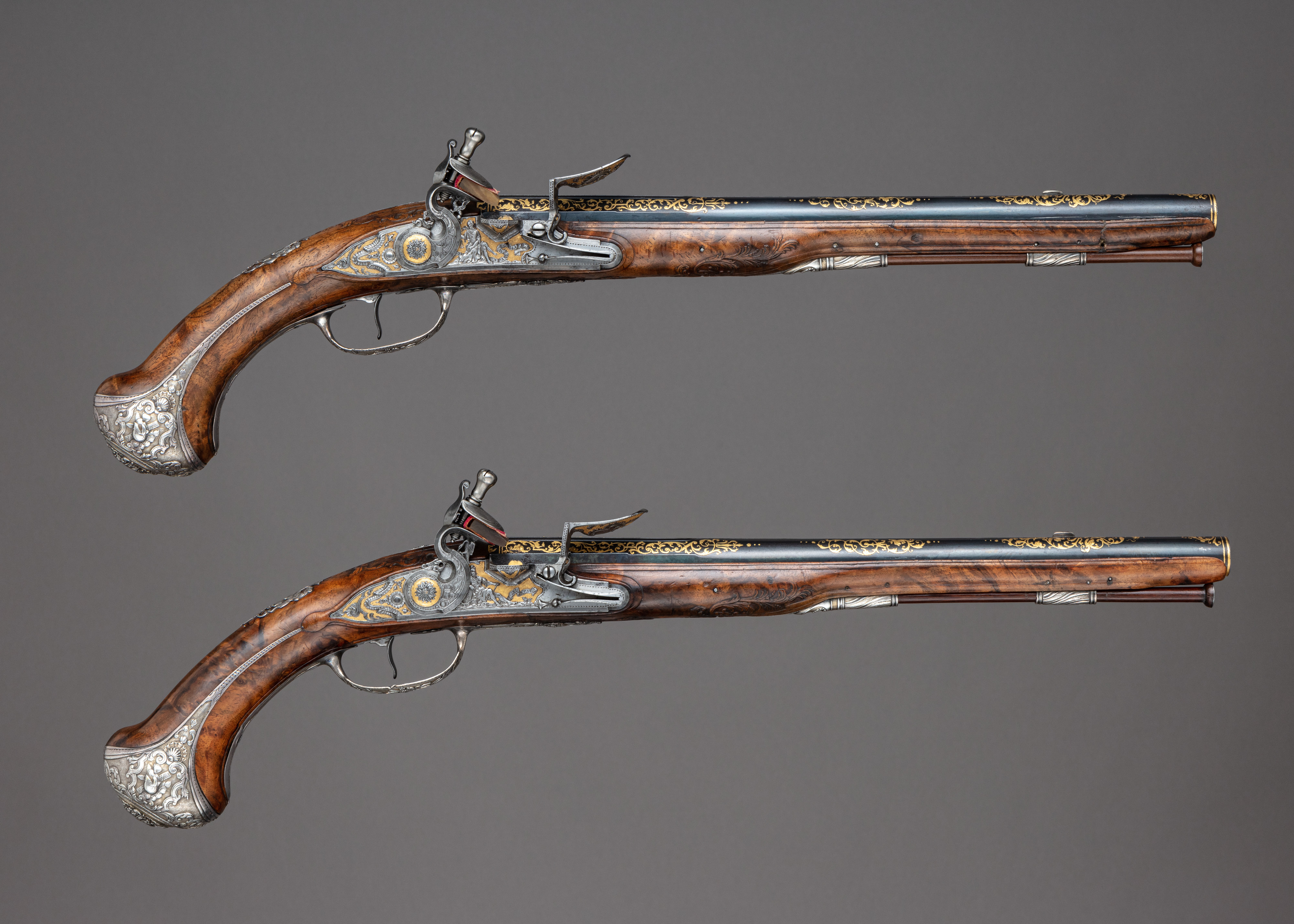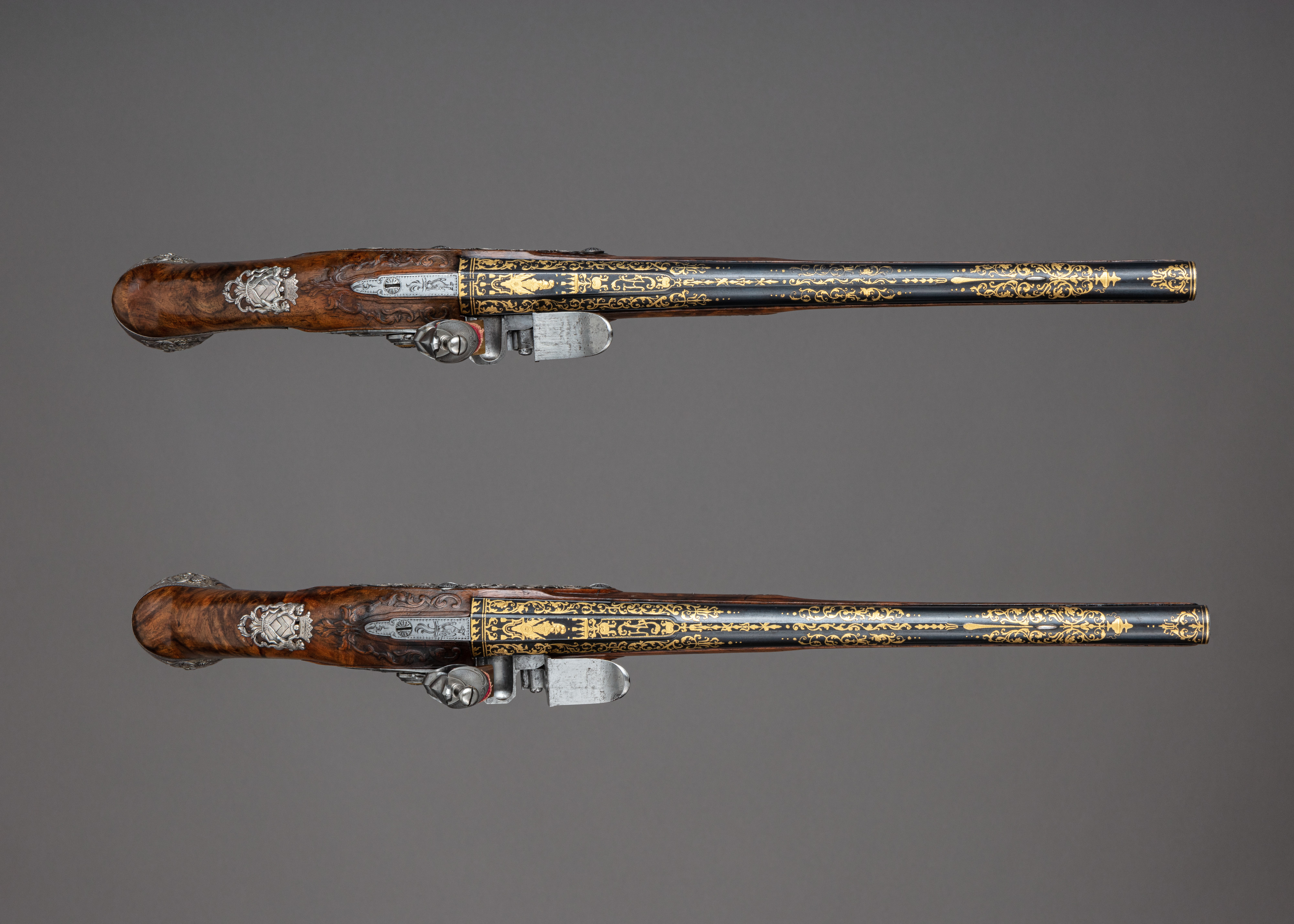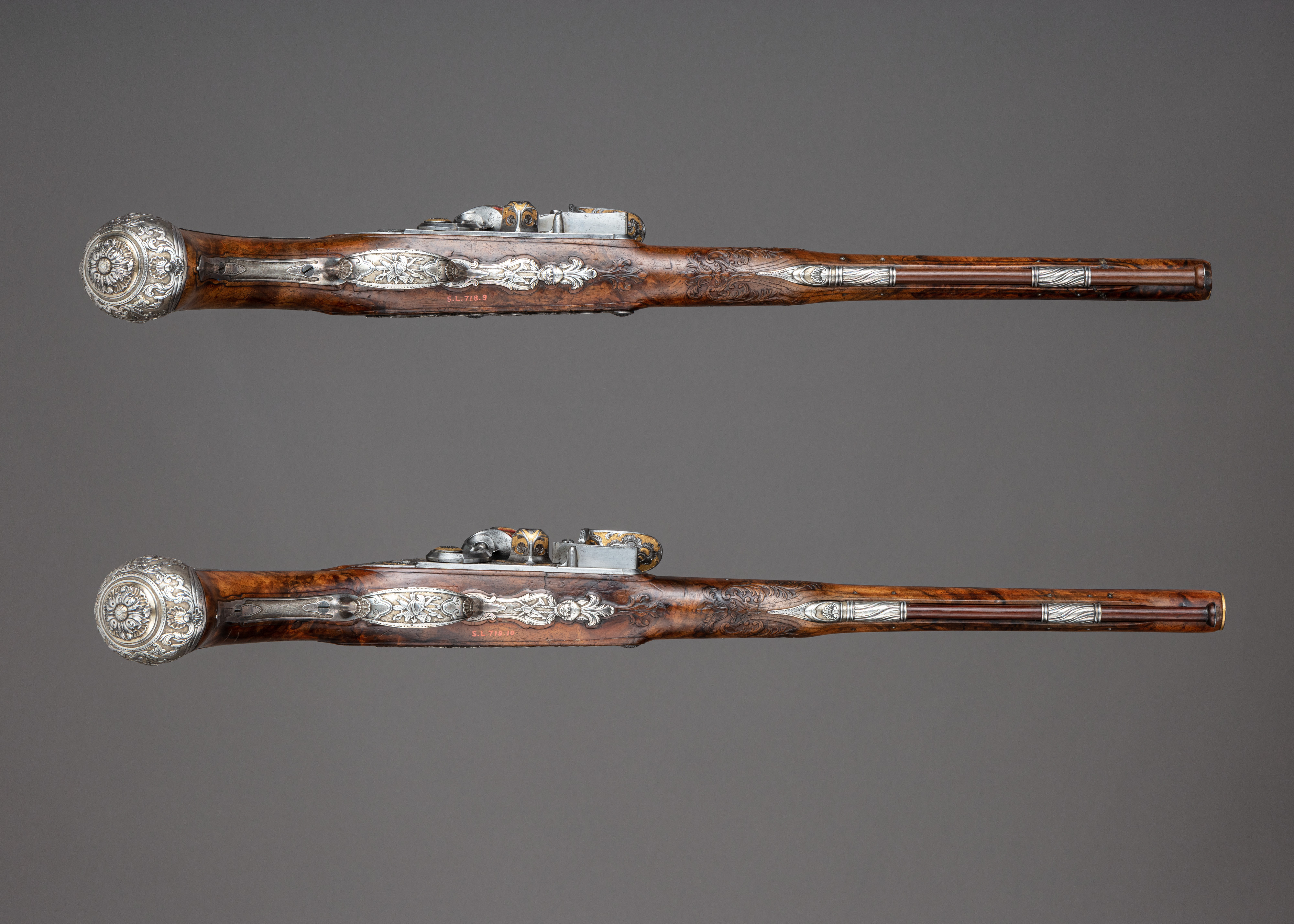Pair of Flintlock Pistols of Count Heinrich von Brühl (1700–1763)
Gunsmith Adrien Reynier the Younger, called Le Hollandois French
or Charles Reynier, called Le Hollandois French
Not on view
These exquisitely decorated pistols represent a high point of the gunmaker’s art during the reign of Louis XV, when the French style of firearms ornament set the fashion for all of Europe. They are signed Le Hollandois (the Dutchman), a nickname applied to three generations of gunmakers in the Reynier family, originally from Holland, who worked in Paris and created firearms for members of the royal court from the mid-seventeenth to the mid-eighteenth century. The style of the first Le Hollandois, Adrien Reynier the Elder (born ca. 1630), is documented in a widely influential pattern book of ornament for firearms (acc. no. 2016.403.9), published in Paris in 1660, in addition to extant signed firearms. His son, Adrien Reynier the Younger, became gunmaker to the king in 1723. This pair of pistols exemplify the way in which the style established by the elder Le Hollandois was refined and evolved to suit the tastes of succeeding generations of noble patrons. The brightly polished steel locks of the pistols are crisply chiseled with classically inspired figures and motifs offset by a stippled gold ground. These are complemented by the butt caps, side plates, and other fittings, which are cast in silver and covered with raised decoration characteristic of Le Hollandois best work. The beautifully figured walnut stocks are fitted with brilliantly blued barrels lavishly encrusted in gold.
A silver thumb plate, or escutcheon, bearing a coat of arms and insignia, is inlaid into the stock of each pistol at the wrist. These emblems identify the original owner of the pistols as Count Heinrich von Brühl, an influential statesman who held high positions under successive electors of Saxony. Also a bibliophile and leading patron of the arts, von Brühl was director of the famous Meissen porcelain factory and is remembered for commissioning the enormous "Swan Service," consisting of over 2000 pieces of porcelain, each decorated with his coat of arms (acc. no. 48.165).
The Museum was lacking a signed example by any of the Le Hollandois gunmakers, making this pair of pistols an even more significant addition to the collection. In addition, these pistols had been long sought after by the Met. They were on loan to the Department of Arms and Armor from 1911 until the 1920s. Both Bashford Dean (1867–1928) and Stephen Granscay (1897–1980), the first and second curators of Arms and Armor, attempted unsuccessfully to acquire them for the museum during that period. They later belonged to a series of major collectors, including Theodore Offerman (1874–1937), a renowned New York socialite, art collector, and art dealer who specialized in arms and armor; R. T. Gwynn (1905–2001), and W. Keith Neal (1905–1990), two of the leading twentieth century British collectors. Thanks to the generosity of Robert M. Lee and the Lee Foundation, approximately a century after seeing these treasures slip away, these masterpieces of eighteenth-century French craftsmanship have returned to the Met at last.
This image cannot be enlarged, viewed at full screen, or downloaded.
This artwork is meant to be viewed from right to left. Scroll left to view more.
